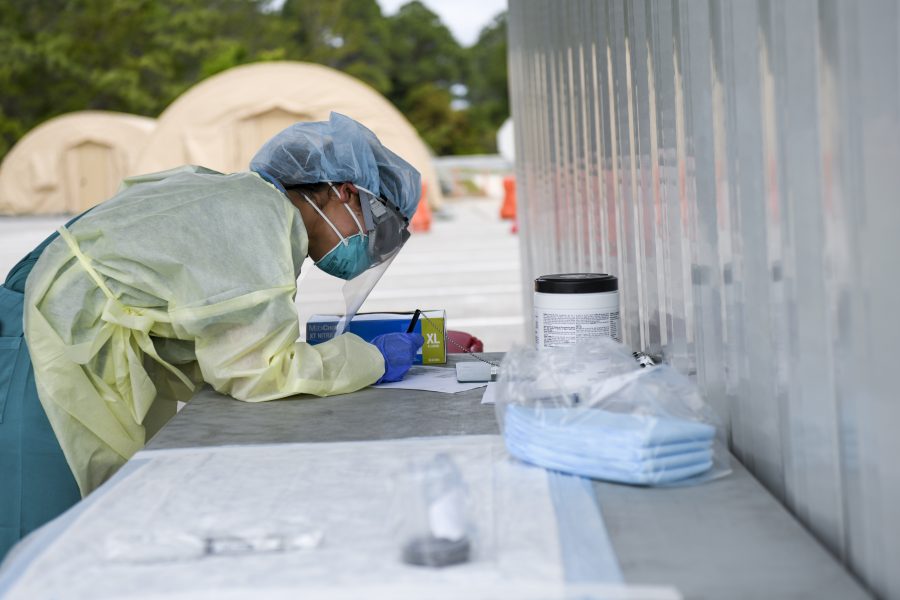The military has finished testing its top tier of forces and is planning to test a selection of asymptomatic personnel across the force to better understand how the virus has spread through the ranks.
The Pentagon announced a four-tier testing plan, starting with key strategic and homeland defense personnel, followed by troops in the combat zone, those deployed or returning, and lastly other forces. Chairman of the Joint Chiefs of Staff Gen. Mark Milley told reporters May 5 top-tier testing is complete and the military has moved on to the second group.
DOD currently can test about 20,000 people per week, but ultimately the need is for about 56,000 tests per week, Defense Secretary Mark Esper said in the same briefing. These numbers have changed as the situation develops.
Once the top three tiers are addressed and there’s enough capacity, the Pentagon is planning “Sentinel testing” as part of the fourth tier, in which groups of service members are randomly tested to “understand how many asymptomatic carriers are out there,” Esper said. The military will “test just in case” to “see if there’s carriers,” which will help “sharpen our focus.”
“Testing the entire force is probably not a complete requirement,” Milley said.
As of May 5, there were 4,967 COVID-19 cases in the Active Duty military, including those who have recovered and two deaths. Including contractors, dependents, and civilians, there are 7,526 cumulative cases.
As the military works through testing its ranks, bases in states like Georgia, Florida, and Texas are preparing to deal with communities that are reopening. Esper said the Pentagon will provide guidance in two levels to address these issues. First, there will be guidance for all installations within a state for how to limit further spread of the virus. There can’t be individual policies for each service or base, because some of these states host several bases from multiple services. Secondly, each installation commander will use this guidance to apply their own set of criteria to their installation based on the local situation, Esper said.
Military intelligence is still working to understand the outbreak, and where it began. Milley said the weight of the evidence shows that the virus is not man-made, and was not intentionally released in China. However, evidence, so far, is not conclusive on whether it originated in the “wet” market in the city of Wuhan or possibly from a lab in the city.
“We don’t know. There are various agencies looking at that,” Milley said, adding that it would “help a great deal” if China opened its borders to allow international agencies to conduct research.

